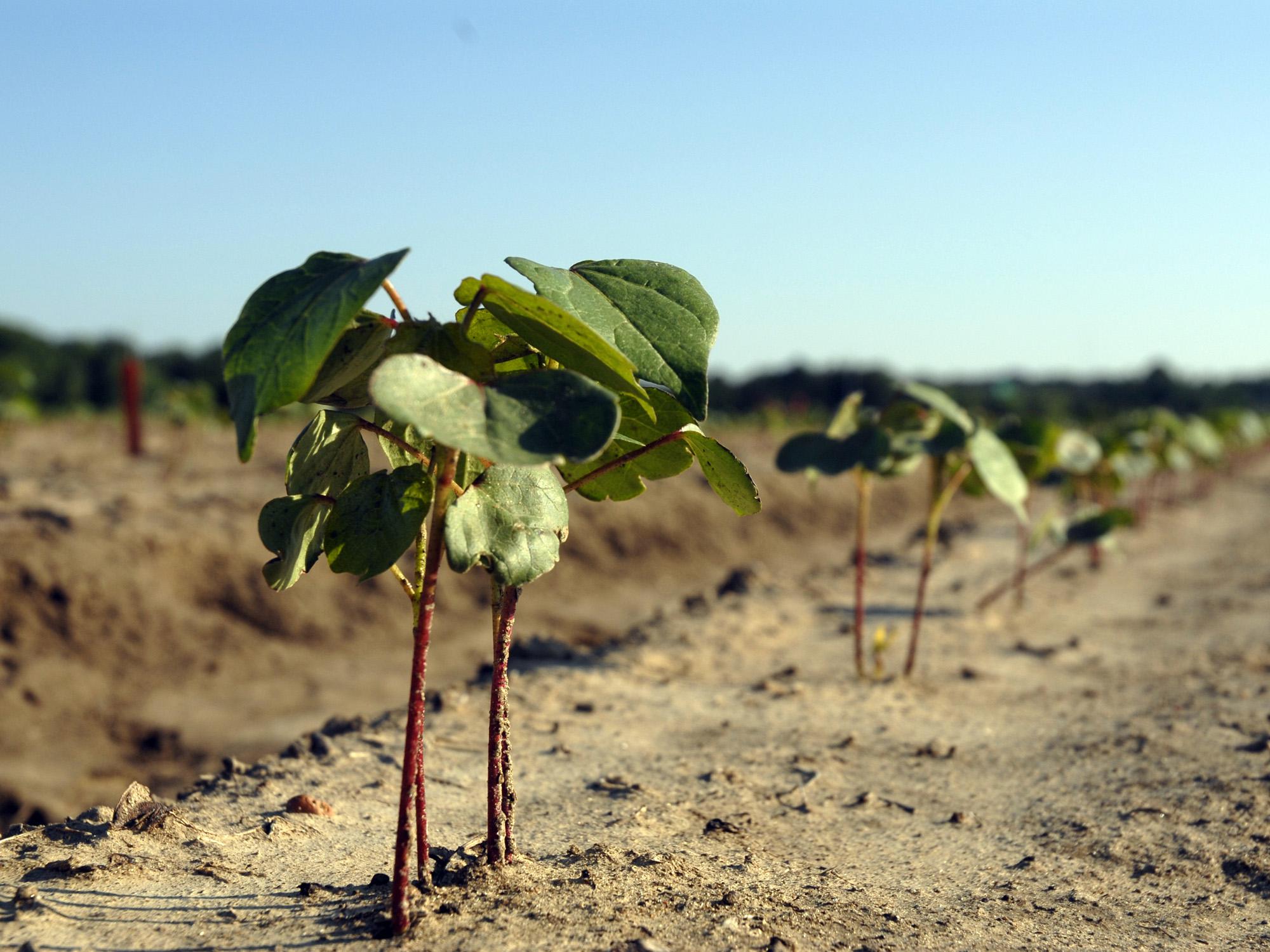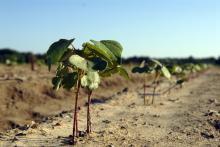Information Possibly Outdated
The information presented on this page was originally released on May 16, 2014. It may not be outdated, but please search our site for more current information. If you plan to quote or reference this information in a publication, please check with the Extension specialist or author before proceeding.
Rain-free week allowed planting to gain ground
MISSISSIPPI STATE – Frequent rains kept farmers indoors through much of April, but clear weather in early May allowed them to play catch-up on row-crop planting.
The U.S. Department of Agriculture reported that planting of most of the state’s row crops is back on schedule after the wet early spring. Corn is the first crop planted in Mississippi and much of it was planted on schedule. As of May 11, USDA reported cotton is 45 percent planted, rice is 68 percent planted, grain sorghum is 42 percent planted and soybean is 55 percent planted.
With the exception of grain sorghum, which is still running behind schedule, each of these commodities is on track with historic planting dates.
“Producers were finally able to get in a rhythm last week,” said Alex Deason, Mississippi State University Extension Service agent in Sunflower County.
Darrin Dodds, Extension cotton specialist, said most of the cotton in the state was planted in May.
“A little was planted before that in the southern part of the state, but cotton planting really kicked off in the first few days of May this year,” Dodds said. “Last week, things ran absolutely wide open, and we made up a lot of ground very quickly.”
Cotton’s ideal planting window is from the third week of April to mid-May, so the crop is still on schedule.
“This year, planting will push a little outside that, but if we get some decent weather, it won’t make us too crazy,” he said.
Cotton should be planed on about 400,000 acres in Mississippi this year, well up from the 280,000 acres harvested last year, but still only about half the acreage seen in the past.
“Producers are worried about getting behind, but if we can get the rest of the crop in the ground in the next week or 10 days, we’ll see that optimism come back and we’ll start to deal with the challenges as they present themselves over the summer,” Dodds said.
Bobby Golden, Mississippi Agricultural and Forestry Experiment Station agronomist at Stoneville, said the state basically has two rice crops about a month apart.
“We are beginning to fertilize and flood some fields in the north Delta, while some planting is finishing up in the south Delta,” Golden said. “What is up is looking good so far, and if the favorable weather holds, we should be finished planting by mid-May.”
This year’s acreage is expected to exceed what was planted in 2013. He said producers seem optimistic even with the crop being planted slightly later than usual.
More than half the state’s grain sorghum acreage is typically planted by this time, but Erick Larson, Extension grain agronomist, said growers should have ample opportunity to plant this crop if the weather allows further progress.
“Sorghum actually needs a little warmer soil temperatures than soybeans need, and waiting a bit later to plant gives you an opportunity for a better stand,” Larson said.
The state should have more than 100,000 acres of sorghum this year, which is higher than it has been in recent years.
“It’s a lot more economical to grow than corn and is a good alternative for a dryland rotation crop with soybeans,” he said. “It can also be planted as a double crop after wheat. Planting in May is generally optimal for grain sorghum, but it can be planted through about the first of July.”
Larson said he expects more sorghum will be planted when cotton and soybean planting winds down, and a few acres may go in after wheat is harvested.
Trent Irby, Extension soybean specialist, said the first full week of May made a huge difference in soybean planting progress.
“We covered a lot of ground during the last week of April and first week of May,” Irby said. “Some areas got rain and had to quit planting, but other areas actually needed the rain to replenish the moisture so that planting could continue.”
Soybean, the state’s largest row crop, is expected to cover over 2.1 million acres this year. While early-planted soybean has the best chance of success, the crop has a huge planting window and can be planted as late as early July and still succeed. Irby said soybean planting was behind normal in April, but favorable weather during May will keep planting progress on track.
“We usually see about 90 percent of our crop planted before the end of May, and the other 10 percent is double-cropped behind wheat,” he said. “We have so many acres to cover that it takes some time to plant, but given the size of the equipment our producers are operating, it doesn’t take long to catch up when the weather cooperates.”








